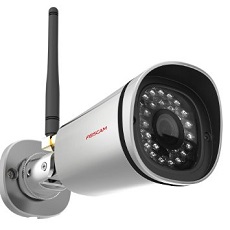
Every business owner knows that having a CCTV camera system is important to securing their business. However, a lot of people simply buy these surveillance systems and install them without paying attention to proper installation or maintenance. It’s no surprise, then, that sometimes all a business owner would get is a dark, grainy footage—a video that’s virtually useless—from his or her CCTV camera. Use the tips below to get the most out of your CCTV camera investment.
- Choose the best spots to install them.
Simply looking for the highest point in your home or shop and sticking a CCTV camera on it won’t do. While it’s important to install your camera at least seven feet above the ground, pointing down, you should also check if there are any obstructions in its way. That way, your camera gets to record video of what really matters, instead of the pole standing in front of it.
You should also remember to install your surveillance system in easily forgotten spots that thieves may take advantage of, such as back doors or windows. - Your cameras should be always online.
Having a CCTV camera system in place won’t make any sense if they’re offline every now and then. That’s why it’s important to invest in a reliable wireless broadband solution—you wouldn’t want your CCTV camera conking out in the middle of recording important video. Make sure that your ISP and your network equipment have enough bandwidth to upload a live stream of your CCTV cameras. - Make sure your cameras get enough light.
Like other kinds of cameras, a CCTV camera won’t be able to record clear footage if it’s too dark. However, on the flip side, you don’t want too much light or else your video ends up being overexposed. You need to find the right lighting conditions or create them by installing new lights or repositioning existing fixtures. That way, your CCTV camera will be able to capture the best possible footage from its spot. - Configure your camera’s software correctly.
When it comes to installing a CCTV camera system, you shouldn’t just worry about hardware. The software you use to control the cameras are just as important. Hence, after you’ve made sure that your CCTV cameras are in the right spots, you should turn your attention to optimizing the software. For example, this can be as simple as renaming the cameras after the areas their range covers. You can also program them to make a quick sweep of a specific area at specified times.
- Have a remote backup system set in place.
A backup up in the cloud will help you ensure that you still have your CCTV’s video recordings, even if the system itself conks out—or worse, gets stolen. And since your cameras are already connected to the internet, you won’t need to set up too many additional programs to create these backups. Just set the network hard drive your cameras save video on to automatically sync with cloud-based services such as Dropbox or Google Drive.






